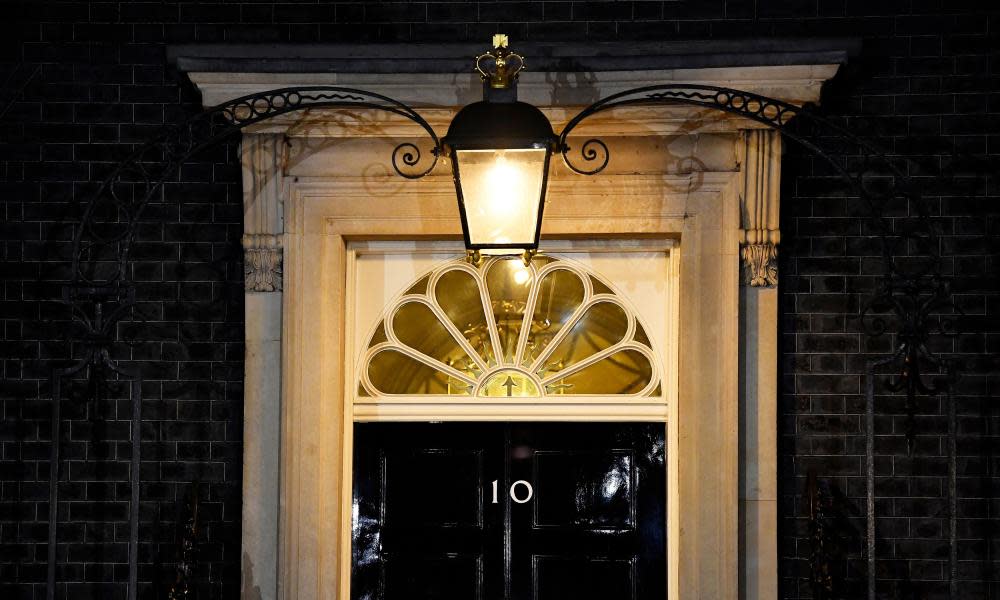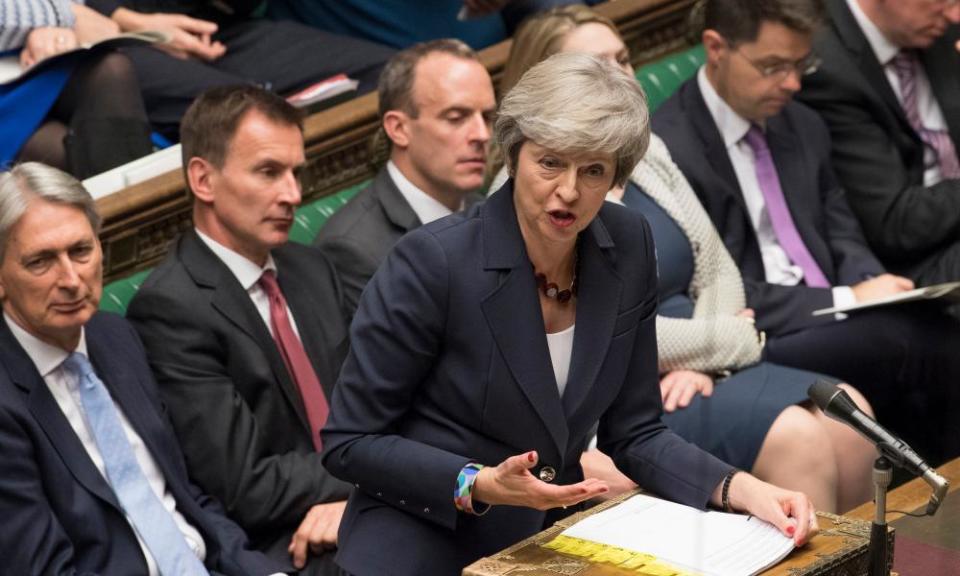Theresa May has made her move. Now MPs must take back control

Not just one, but two vital meetings for the future of Britain’s relationship with the European Union took place on Wednesday afternoon in Westminster. The first meeting, generating more noise than news throughout a long day, was of Theresa May’s cabinet. Its importance was self-evident. The second meeting, also hugely significant, went wholly unnoticed. In its own way, though, it was equally crucial.
The first meeting first. It has long been obvious that, on Brexit, May uses the free-at-last language of the Tory right while tacking at the last moment towards a deal with the EU. She did this in 2017 on the first withdrawal agreement. She did it in the summer at Chequers. Now she has done it a third time, proposing a deal in which Britain will try to remain economically aligned with the EU while having no say over its rules. A bad deal, it is now confirmed, was always going to be better than no deal. It is difficult to be surprised.
Wednesday’s cabinet meeting was a long-planned effort by No 10. Its aim was to bounce other ministers into agreement with the prime minister’s deal. The ministers didn’t get the chance to read the agreement fully. They were given individual briefings that flattered their self-importance. If the strategy succeeded – and most ministers bought in – it meant the Brexit deal would reach first base in the long process of ratification. It would also have momentum, making it harder to defeat.
No 10 has shown some emotional intelligence this week alongside the political ruthlessness. It is easier to talk about resigning than to resign with a real deal on offer that, in all likelihood, all 27 EU member states will endorse. There was lots of talk on Tuesday and through much of Wednesday about who might walk out – almost half the cabinet, some normally sensible people suggested. But in the end?
In politics, as in life, reality is different from theory. Human beings think they know about birth and death until the moment when they hold a newborn baby, or in which they contemplate a dead parent. In a similar way, a deal in practice has force that a deal in theory always lacks, especially when it is backed, not trashed, by both the Daily Mail and the Express. Yesterday, as ministers pondered, No 10 put its foot to the floor on the timetable – publication following in hours, a statement by May in the Commons on Thursday, an EU summit to sign off at the end of next week, a Commons vote early in December. Just like the first world war, it would all be sorted by Christmas.

Meanwhile, Westminster’s second important meeting was going ahead under the radar. MPs have long been promised a “meaningful vote” on the package that May secured this week. Wednesday’s meeting of the Commons procedure committee will have done much to shape how that will work. At issue is whether parliament will have the tools and the will to take control of the Brexit decision and reshape it in the way the parliamentary numbers suggest is possible and that so many in and beyond Westminster want and expect it to do.
Wednesday’s committee meeting under its backbench chair, the Conservative MP for Broxbourne and a leave campaigner, Charles Walker, was a private one. It took place for the limited purpose of agreeing (or not) the final text of a report that is expected to be published on Friday. On the face of it, the report will be tediously technical. But its soulless title, Motions under section 13(1) of the European Union (Withdrawal) Act 2018, masks a question of raw political importance.
That question is whether, in its meaningful vote, parliament has the muscle to do anything more than approve or reject May’s deal. If May had a working majority, the answer would be pretty obvious – approval. But she doesn’t have a majority, so the outcome isn’t obvious, and the scope of the procedure to be followed is therefore crucial for the many who oppose May’s deal and no-deal alike.
Originally, the government tried to argue that the vote should be a “take it or leave it” choice. Dominic Grieve’s amendment to the withdrawal bill scuppered that last year. The Brexit secretary, Dominic Raab, then appeared, in a letter, to revive the original approach last month. Now, as May repeated at prime minister’s questions on Wednesday, the government’s motion will be amendable. But it is still not clear if amendments will be heard and taken first, as normally happens; whether the government approval motion will come first, with amendments only taken in the event of rejection; or whether all motions will be taken discretely.
Among Britain’s 650 MPs there are groups that want a softer Brexit deal than May has secured, those who want a harder one, those who want no deal at all, those who want a second “people’s vote” referendum on the deal, and those who simply want a general election and a new government. Only a few of these positions can be confident of a majority. So the mechanics and sequencing of how these different interest groups get their chance to pitch for parliamentary backing – if they get that chance at all – are therefore a key factor in the politics of the next four weeks.
This is where the procedure committee comes in. If it proposes an expansive timetable and process, in which all options are considered, the government could be in trouble. The Speaker, John Bercow, is said to be determined to ensure that all options, including the people’s vote, get debated and voted on. Bercow is definitely up for a fight with ministers who will try to stop the Commons from trying to bind the government.
Even if Bercow gets his way, though, the sequencing of the different motions when they come to the vote, now expected to be around 6 December, will be vital. The people’s vote option’s best chance, for example, would seem to come only after all other options have fallen.
If Labour’s general election motion is defeated early on in the process, as is likely, Labour must decide whether to whip its MPs in support of a people’s vote. It might, however, opt for the pro-single market Efta membership motion – known to some as “Norway for now” – that is backed by MPs in all parties (and by David Cameron) and could command a Commons majority. Labour’s crafty veteran chief whip, Nick Brown, will be a key player in all this.
Most of the time, parliamentary procedure does not matter much in Britain’s politics. But the sudden arrival of a huge national moment in the shape of the Brexit deal, and the choices it poses, pitches it into the limelight. May’s deal means MPs now have to use Commons procedure to turn all that talk about meaningful votes into something that is, well, meaningful.
• Martin Kettle is a Guardian columnist

 Yahoo News
Yahoo News 
